- Luật
- Hỏi đáp
- Văn bản pháp luật
- Luật Giao Thông Đường Bộ
- Luật Hôn Nhân gia đình
- Luật Hành Chính,khiếu nại tố cáo
- Luật xây dựng
- Luật đất đai,bất động sản
- Luật lao động
- Luật kinh doanh đầu tư
- Luật thương mại
- Luật thuế
- Luật thi hành án
- Luật tố tụng dân sự
- Luật dân sự
- Luật thừa kế
- Luật hình sự
- Văn bản toà án Nghị quyết,án lệ
- Luật chứng khoán
- Video
- NGHIÊN CỨU PHÁP LUẬT
- ĐẦU TƯ CHỨNG KHOÁN
- BIẾN ĐỔI KHÍ HẬU
- Bình luận khoa học hình sự
- Dịch vụ pháp lý
- Tin tức và sự kiện
- Thư giãn

TIN TỨC
fanpage
Thống kê truy cập
- Online: 223
- Hôm nay: 198
- Tháng: 1621
- Tổng truy cập: 5245625
Vietnam Moves to Save Mekong Delta
Regime accepts foreign help to turn away from “rice-only” policy

Vietnam's low-lying southwestern provinces may be about to get off the list of places most threatened by climate change and human foolishness. From Hanoi down to the rice roots, party and government at last seem truly embarked on a program of comprehensive and timely adaptation: the Mekong Delta Plan.
The Mekong Delta includes 12 of Vietnam's 64 provinces as well as a slice of Cambodia south of Phnom Penh. The delta's fertility is legend; every rainy season for eons the Mekong has delivered silt from the mountains of China and Laos to build a delta that now extends, in Vietnam over 41,000 square kilometers at an average elevation of 1.5 meters above high tide in the surrounding sea. During the 19th and 20th centuries, canals were dug, swamps drained, dikes built, a vast engineering project that optimized the delta for rice production. By the late 1990s, Vietnam was challenging Thailand as the world’s No. 1 rice exporter. Invested in manufacturing, earnings from rice exports speeded Vietnam’s transformation into a competitive producer of goods for world markets.
It was too much. The huge investments in dams and dikes designed and built to maximize rice production reduced the Delta’s hydrological resilience and the ability of its farmers to profit from changes in the natural environment. Although scientists forecast that seas would rise and weather patterns would change, planners, politicians, and officials of Vietnam's Ministry of Agriculture and Rural Development (MARD) were slow to acknowledge that the rice-first policy was becoming unsustainable.
Then, in 2009, Dutch aid officials proposed to share their nation's experience in flood control. Informal discussions began between Dutch experts and officials from MARD and the Ministry of Resources and Environment (MONRE). Unlike many foreign experts, the Dutch participants in the Mekong Delta Plan (MDP) dialogue were patient and brought relevant experience to the table. And, though MARD and MONRE are natural rivals, the Dutch were adept at keeping both sets of counterparts productively engaged.
In 2013, the group published its report. It was ambitious. Just about everything had to change, it said, including Hanoi's cherished rice-first policy.
The report argued that the Delta's problems can't be solved by building ever more dikes and sluices. It made a good case for adaptation to seasonal flooding and, when the monsoon ended, turning the infiltration of brackish water into a good thing by farming shrimp instead of rice.
The World Bank signaled its interest in piloting, in Vietnam, a program of comprehensive adaptation to climate change, but nonetheless, the report languished. Vietnam's Communist Party was preoccupied by a bitter factional struggle. Not until 2016 could a new set of leaders focus on the experts’ proposals. Coincidentally, an epic drought was blighting the winter-spring rice crop.
Then, late in 2017, two documents signaled that the party-state might embrace both the MDP’s prescriptive analysis and unusually close collaboration with foreign “development partners.” The first was Resolution 120, top-level policy guidance on “Sustainable and Climate-Resilient Development of the Mekong Delta of Vietnam.” The document acknowledged that the delta way of life is being hammered not only by climate change and the harm done by the construction of many dams far upriver, but also by the consequences of short-sighted government decisions in earlier times. Ministries were to develop a coordinated response in accordance with the concepts laid out in the MDP.
The second document, a revised Law on Planning, mandated the Ministry of Planning and Investment (MPI) to implement multisectoral planning at the regional level. In other words, planners and policymakers were empowered to address the delta as a coherent whole.
An observer could have been forgiven for having low expectations. There was no such entity as a “region” in Vietnam’s administrative structure. Regional institutions would have to be built from scratch. And, though there might be some open minds in the MARD structure, decisions in the Delta had always been driven by the 'hydrocracy', a network of officials, engineers and MARD-connected contractors who prescribed "an ever more complicated array of hydraulic works."
There was an additional defect: the ruling party is congenitally wary of solutions pushed by foreigners and determined to insulate domestic politics from outside interference. Though the Dutch experts didn't press "made in Holland" water management solutions, they had insisted that the MDP to be presented as an array of hundred-year "no regrets' scenarios that would be modified often in the light of experience. That's an idea patently incompatible with the procession of five-year plans familiar to the Vietnamese ministries.
Further, although cross-sectoral planning may seem intuitively a good thing, when local officials and political leaders have little experience in such cooperation, it is not so easy for them to bring about. Nor do Vietnam’s ministries have a tradition of cooperation. Agriculture, environment, transport, construction and other ministries have long done their business with minimal deference to other ministries’ goals.
Resolution 120 assigned to the Ministry of Planning and Investment the job of making all this unaccustomed coordination happen, of converging the MSP vision into a “Mekong Delta Integrated Regional Plan” (MDIRP) that accommodated the agendas and working styles of the Vietnamese ministries. The work of making the MDP “more Vietnamese” proceeded slowly, despite looming deadlines for inputs to Vietnam’s new five-year Socioeconomic Development Plan.
In April 2019, Prime Minister Nguyen Xuan Phuc issued a 38-page “Action Plan” that, among other things, made quite clear his personal commitment to the materialization of a robust plan of work.
Foreign development partners were anxious nonetheless. Two months later, on the eve of a second Mekong Delta Plan Summit, 16 international organizations issued a bluntly worded joint statement. In his remarks at the meeting, World Bank resident director Ousmane Dioune noted that the donor group was quite serious. Development aid entities, in particular the bank, had already put over a billion US dollars into the MDP project. "Looking ahead," he continued, "we aim to mobilize at least US$880 million to implement Resolution 120… Any further support to the Mekong Delta will only make a difference if there are strong institutions, effective implementation, robust information, commitment to innovation, and involvement of all stakeholders.”
“The thinking being done,” Dioune added, “must result in a strong regional coordination institution that delivers effective and efficient vertical and horizontal coordination.”
A memorandum circulated by the German government’s aid agency stressed that the coordination issue could only be solved if the prime minister intervened forcefully to resolve contentious issues (which, in fact, he had already done).
The development partners’ anxiety was understandable. The scenario for delta development implied a level of cooperation between foreign experts and Vietnamese planners that was perhaps unprecedented for Vietnam. Even so, by mid-2019, the development partners seem to have been pushing on an open door.
The Planning Ministry's Integrated Regional Master Plan is headed for its official launch as early this month. By all indications it will be easily recognizable as a descendent of the 2013 Mekong Delta Plan.
In June 2020, Prime Minister Phuc approved formation of a regional development council, a first for socialist Vietnam. Will it work as planned? Again, a little skepticism is warranted.
The ministries are in the habit of giving direction to province-level subordinates. They may expect the new regional councils to rubber-stamp decisions made in Hanoi. That could happen or, conversely, the officials representing Delta provinces may be able to network effectively, and rely on "integrated data [and] decision support systems" funded by the World Bank.
Local experts report that there is already broad, informal buy-in to the MDP's emphasis on flexible adaptation to stresses on regional fertility and socio-economic development. Triple-cropping of rice has all but been abandoned. Fresh water is being treated as a scarce resource. Much current planning centers on trapping fresh water in upstream areas during the wet season and, in the dry season, steering it to thirsty sectors downstream.
Along the Delta seacoast, traditional thinking aims to raise and reinforce the now ragged system of coastal dikes, an approach that incidentally impounds polluted water and empties aquifers. The MDP in contrast envisions the regeneration of mangrove forests extending back from the coasts for several kilometers. The salt-tolerant, sediment-trapping trees will in addition provide habitat for free-range shrimp. And, inside the regenerated mangrove barrier, land once dedicated to rice cropping will now be ponded and produce ever more shrimp.
The new approach ought to be a no-brainer. However, the hydrocrats are pressing for funds to extend the Cai Lon-Cai Be project, a structure-intensive scheme conceived some 15 years ago. So far, it's been a bad idea that just won't die, and now also a critical test of the MDP's transformative power.
David Brown is a retired US diplomat and a frequent contributor to Asia Sentinel. He has written extensively on public policy issues in Vietnam.
By: David Brown - Asiasentinel
Các bài viết khác
- Từ sự kiện Tổng biên tập báo TIME Greta Thunberg là Nhân vật của năm 2019 đến báo cáo Biến đổi khí hậu Phúc trình của IPCC báo động đỏ cho nhân loại 82021 (15.01.2020)
- MB hợp tác chiến lược với Novaland (26.01.2021)
- TP HCM sẽ ngầm hóa tới từng con hẻm (26.01.2021)
- Sẽ xây hàng ngàn căn hộ sang ở khu trung tâm TPHCM (26.01.2021)
- Văn phòng trống tăng cao vì xu hướng thuê thay đổi (26.01.2021)






















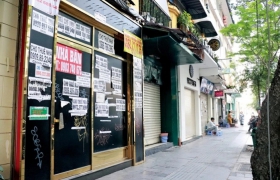
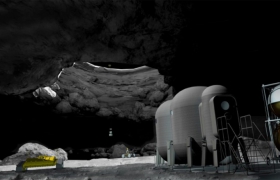



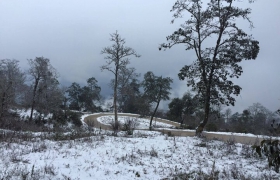



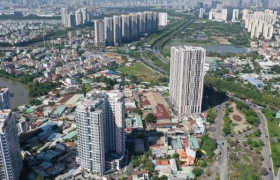
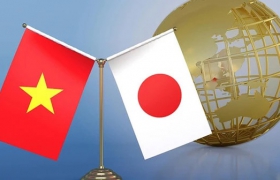

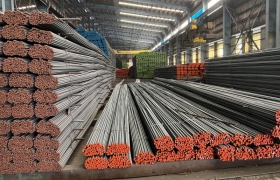







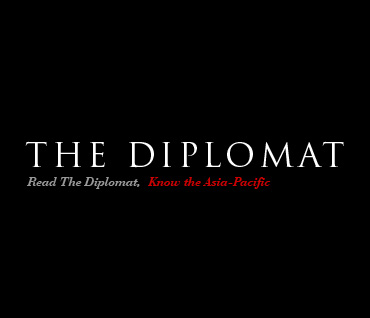







 Yahoo:
Yahoo: 